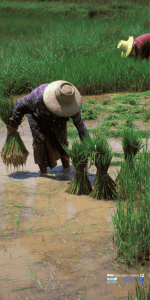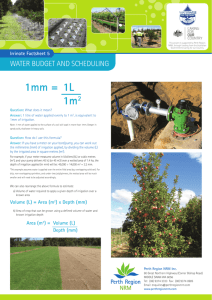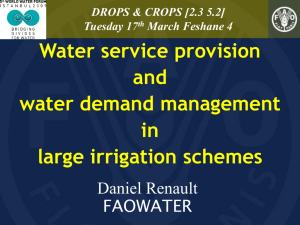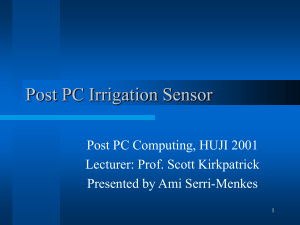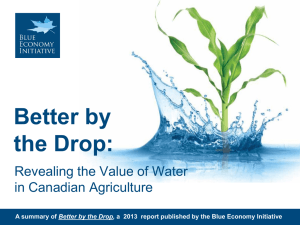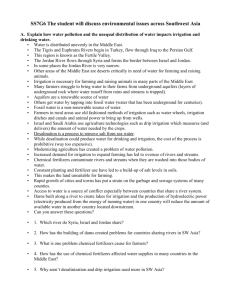ppt - IIHR – Hydroscience & Engineering
advertisement
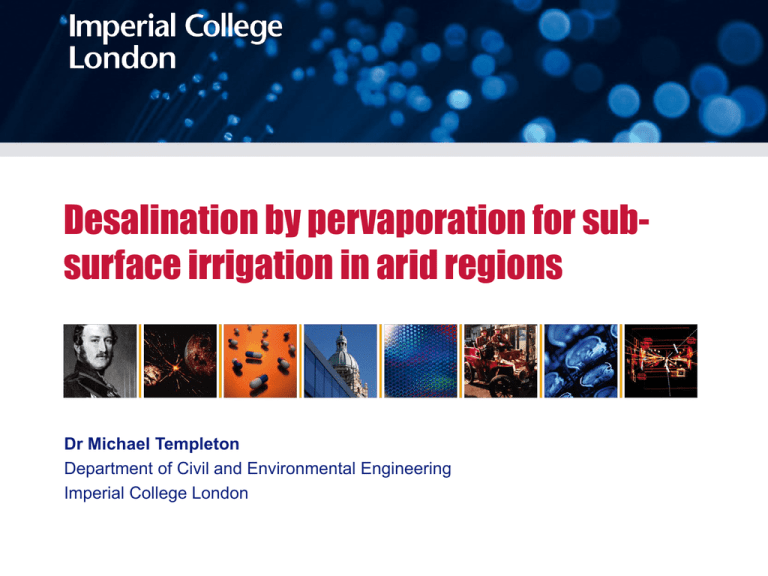
Desalination by pervaporation for subsurface irrigation in arid regions Dr Michael Templeton Department of Civil and Environmental Engineering Imperial College London What is the problem? Clean fresh water is an increasingly scarce resource Groundwater supplies are being abstracted faster than they are being replenished and are becoming salted Agricultural land is being polluted by irrigation water itself and by agrichemicals There is an increasing demand for food crops to support growing populations There is an increasing demand for non-food crops (e.g. biofuel crops) What is pervaporation? Specially constructed material – non-porous hydrophilic polymer Water permeates across the surface and condenses on the opposite side as moisture Virtually all non-water constituents are rejected (e.g. salts, microbes, organics) When partial pressures are balanced, water transfer stops The new idea - to construct irrigation piping out of this material Partnership with Design Technology & Irrigation Ltd (DTI Group), based in Brighton How does it work? What does a pervaporative material look like? Does it work? Does it work? Does it work? Tested in the UK (Eden project), Middle East, USA, and South America Trial crops have included peppers, tomatoes, strawberries, radishes, beans, lettuce, potatoes, grass, vines, sunflowers, and various types of trees (cherry, banana, Acacia) Major trial in Abu Dhabi currently – 200 Prosopis trees growing in 45 ºC watered with highly saline untreated groundwater (140,000 ppm!) Possibly better crop uniformity and yield - i.e. one trial yielded higher radish biomass What are the advantages? Allows the use of otherwise unusable water resources (e.g. brackish water, seawater) By definition, it is an efficient water delivery process – impossible to over-water; potential for significant reduction in water use Easy to operate and manage No requirement for high pressure input (unlike other membrane filtration processes) What are the challenges? It is not possible to provide nutrients to the plants through this system Some plants have shown better aptitude for this method than others Currently more expensive than drip irrigation (but it is more efficient and allows the use of water resources that would be otherwise unusable) Disposal of the reject water must be considered What are some research questions? What are the limits of water quality that are feasible? How do different soil characteristics influence water transfer rate? How can fouling and salt accumulation best be managed? What are the limits of pipe diameter and thickness? When is this technology more favourable/appropriate compared to drip irrigation or other irrigation techniques? What is the pattern/rate of crop growth when a new irrigation project is started with this technology? Do water-stressed plant roots develop differently and have different requirements than plants under un-stressed conditions? Are plants grown in this way as healthy / productive as those grown by alternative irrigation methods? Interested in collaborating? Dr Michael Templeton, Imperial College London Tel: +44 (0)207 594 6099 Email: m.templeton@imperial.ac.uk Web: www.imperial.ac.uk/people/m.templeton




